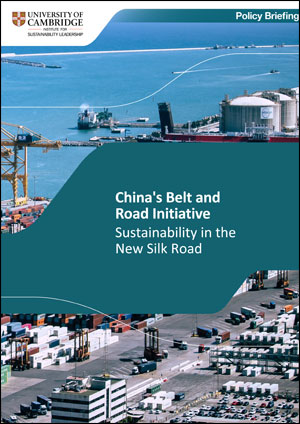9 June 2022 - This policy briefing seeks to contribute to understanding the links between China’s Belt and Road Initiative (BRI), urban transformation and global development. The brief draws on fieldwork conducted in five cities across the Global South and North where BRI infrastructures and investments on the built environment are currently being materialised.
Download the report in English, Mandarin, Greek or Spanish
The BRI is increasingly shaping global discourses on the future of cities, echoing the ways in which the Ancient Silk Road was critical to the growth and decline of cities from the Pacific to the Mediterranean. China has already addressed a significant part of the global infrastructure gap, creating hopes that the BRI may reduce global poverty. However, evidence from our research suggests that local communities impacted by the BRI across the globe are dealing with challenges in livelihoods and housing due to the intensification of land uses, labour conditions and environmental impacts.
This is driving concerns that a new stage of BRI-driven urban development is emerging, which may unevenly reshape urban space and urban lives. If the BRI marks a new global era where infrastructure, industrialisation and urbanisation are more complementary than ever, then how cities along its route will forge an inclusive and socially-ecologically sustainable urban development trajectory may be one of the key challenges of the 21st century.
This brief argues that through the deployment of new infrastructure projects, the establishment of Special Economic Zones, and the construction of new urban spaces, from real estate projects and smart cities to new transportation hubs and large-scale urban regeneration projects, the BRI is transforming cityscapes at an impressive scale and rapidity.
Despite important variations in local planning and governance processes, the implementation of BRI projects in different places across the Global South and North includes the following four key elements:
-
Major changes in land uses, the expansion of large-scale infrastructure, and the intensification of social and environmental processes that transform the entire urban fabric.
-
Mixed implications for local communities, including the displacement and relocation of urban and rural populations.
-
Significant changes in labour relations, standards and conditions of employment.
-
Inadequate inclusion of local communities in the decision-making processes through which BRI projects have been negotiated and agreed.
Report conclusions:
Our results point to the need for a list of measures in places where BRI infrastructural projects materialise to minimise their impacts and support a transition to social-environmental sustainability and justice. In particular, in the brief the author puts forward nine recommendations to ensure more resilient and fair infrastructures that could avoid the risks of business-as-usual approaches.
Citing this report
University of Cambridge Institute for Sustainability Leadership (CISL). (2022). China’s Belt and Road Initiative: Sustainability in the New Silk Road. Cambridge, UK: University of Cambridge Institute for Sustainability Leadership.




